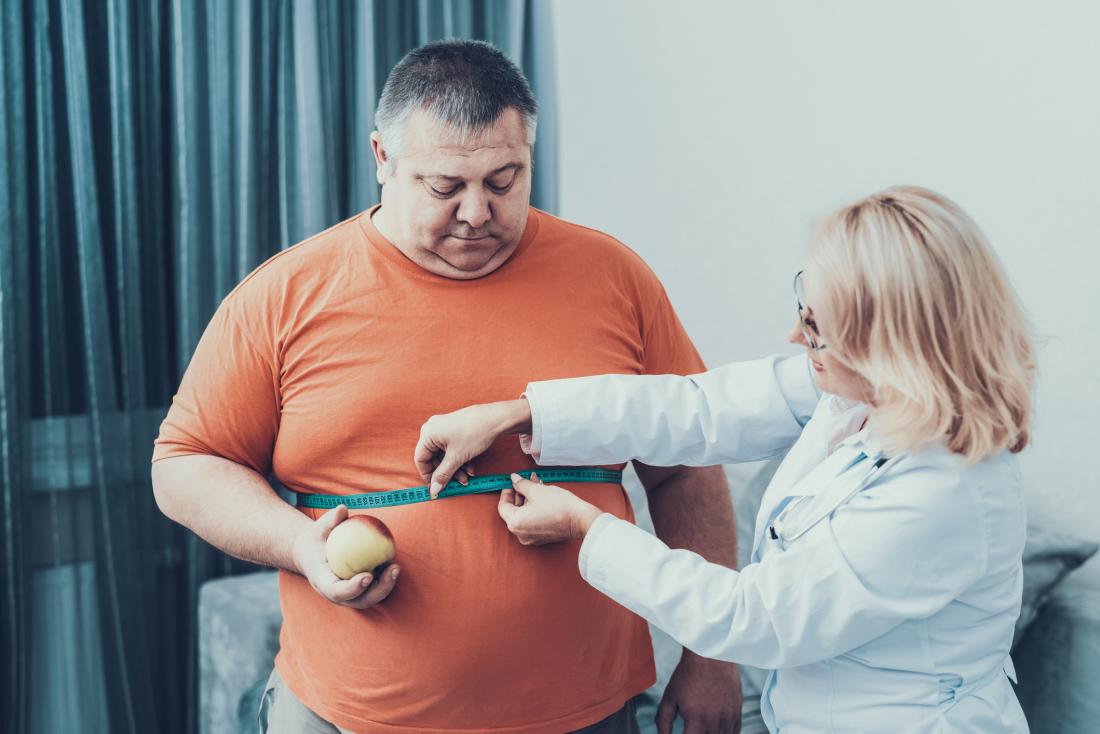New obesity procedure also reduces muscle mass

A study about a new procedure for the treatment of obesity has raised some concerns. This is because, while the treatment leads to weight loss, the pounds a person sheds consist of skeletal muscle as well as fat. Also, body fat loss seems to be mainly of the subcutaneous — as opposed to the riskier visceral — type.
Skeletal muscle is necessary for good health; its loss can result in not only physical problems, but it can also impair metabolism and raise the risk of injury.
Visceral fat is the type of fat that surrounds the organs deep inside the abdomen. Doctors have linked carrying too much of it to health problems, such as type 2 diabetes and heart disease.
The procedure is called left gastric artery embolization. Interventional radiologists have been using it for decades to stop bleeding in emergencies.
However, the idea of using gastric artery embolization to treat obesity is new, and clinical trials are currently evaluating its safety and effectiveness for such a purpose.
The aim of the treatment is to reduce the effect of an appetite hormone by injecting microscopic beads to block an artery that supplies blood to the stomach.
The study’s findings featured recently at the annual meeting of the Radiological Society of North America that is currently taking place in Chicago, IL.
Need for cost-effective, low-risk treatments
Study lead author Dr. Edwin A. Takahashi, who is a vascular and interventional radiology fellow at the Mayo Clinic in Rochester, MN, explains that a lot of research has shown that gastric artery embolization can achieve weight loss.
“However,” he adds, “there has been no data on what is contributing to the weight loss, whether the patients are losing fat, as desired, or muscle mass, or some combination of the two.”
Obesity is a significant global public health issue with links to heart disease, type 2 diabetes, cancer, and other serious illnesses and health problems.
Rates of obesity and being overweight have almost tripled worldwide over the last 40 years, according to the World Health Organization (WHO).
The WHO estimates for 2016 suggest that being overweight affects more than 1.9 billion of the world’s adults. This figure includes some 650 million adults with obesity.
While changes to lifestyle factors such as diet and physical activity can work, for many people, these are not enough, and they opt to undergo weight-loss operations that reduce the size of the stomach.
Such surgical procedures have proved effective as treatments for obesity, but they are costly and carry risks and complications.
Left gastric artery embolization
Left gastric artery embolization — if found to be effective and safe — could offer people a less invasive option for the treatment of obesity.
The procedure involves injecting microscopic beads into the artery that delivers blood to the stomach. The radiologist inserts a catheter either in the wrist or groin and uses imaging to reach the artery.
Once released into the artery, the microbeads block the flow of blood through the smaller blood vessels to the stomach. This has the effect of reducing production of ghrelin, a hunger-stimulating hormone.
Early trials have shown promising results that the procedure can help people lose weight. However, there is little information about where the weight loss comes from, and how it affects body composition of fat and muscle.
Dr. Takahashi and his team examined computed tomography scans of 16 overweight people, some with obesity, who had undergone left gastric artery embolization to stop bleeding.
With help from special software that analyzes tissue density, they assessed fat and muscle composition on scans taken before and about 1.5 months after the treatment.
Results raised some concerns
All 16 of the individuals who underwent embolization lost a significant amount of weight afterward. On average, they lost 6.4 percent of their body weight in the ensuing 1.5 months.
Their body mass index (BMI) fell by 6.3 percent over the same period.
The weight loss came as no surprise to the researchers; however, what did surprise them was the alteration in body composition.
They calculated that skeletal muscle index reduced by 6.8 percent. This index reflects the quantity of muscle in the body that is attached to bone and helps the movement of limbs and other body parts.
Loss of skeletal muscle can not only reduce physical function, but it can also damage metabolism and raise the risk of injury.
“The significant decrease in the amount of skeletal muscle,” says Dr. Takahashi, “highlights the fact that patients who undergo this procedure are at risk for losing muscle mass and need to be managed accordingly after [the] procedure.”
“We must make sure they receive adequate nutrition to minimize the amount of muscle tissue they lose.”
Dr. Edwin A. Takahashi
The results also showed that the individuals lost a lot of body fat; there was an average drop of 3.7 percent in body fat index.
However, most of the body fat loss was due to the reduction in subcutaneous fat. Loss of visceral fat was insignificant over the follow-up.
Subcutaneous fat is all over the body under the skin. Visceral fat is fat that surrounds the organs deep in the abdominal cavity.
Science “has been distinctly linked” carrying excessive amounts of visceral fat to several health problems and conditions. These include impaired metabolism, insulin resistance, increased risk to certain cancers, prolonged hospitalization, and higher risk of complications.
The team now want to focus further studies on individuals who undergo left gastric artery embolization specifically to treat obesity.
Courtesy By :- Medical News Today



